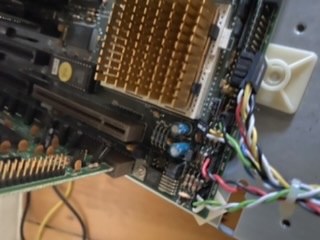First post, by Marco
Im Running an amd486dx/2 66 on my chicony 471b MB rocket stable at dx2/80.
Then I thought let’s try 50x2. Said done. System unstable but enough for some dos benchmarks. Disappointing mainly due to low mem settings I had to set.
Interestingly Bios posts Am486DX4100 😀
I also tried this one with a real 486dx2/80 but no chance at all. Seems to be a good 486dx2/66 😀
Anyone has experiences with 2x 50MHz?
1) VLSI SCAMP 311 / 386SX25@30 / 16MB / CL-GD5434 / CT2830/ SCC-1&MT32 / Fast-SCSI AHA 1542CF + BlueSCSI v2/15k U320
2) SIS486 / 486DX/2 66(@80) / 32MB / TGUI9440 / LAPC-I
